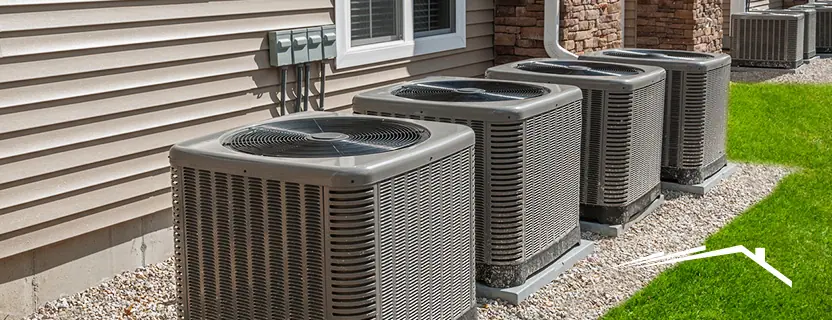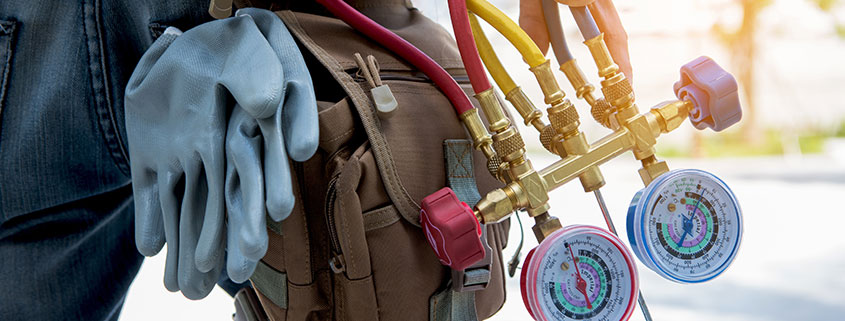The Complete Maintenance List During heat pump service
The Complete Maintenance List During heat pump service
Blog Article
How a Warm Pump and Heating System Interact to Enhance Your Home's Home heating Efficiency
Recognizing just how a heatpump and furnace interact is essential for home owners seeking efficient home heating services. Each system has its toughness, supplying a balanced strategy to home comfort. The warm pump masters modest temperature levels, while the furnace supplies rapid heat during severe cold. This harmony not just decreases energy prices however also improves the life expectancy of both home appliances. What variables influence this cooperation, and exactly how can home owners maximize their benefits?
Recognizing Warmth Pumps: Exactly How They Function
Although many individuals may be not familiar with their inner functions, heatpump play a vital role in contemporary heater. These devices operate by moving warmth from one location to one more, making use of the concepts of thermodynamics. In cooler months, a warm pump removes warmth from the outdoors air, ground, or water, and transfers it inside your home to warm up the living area. Alternatively, throughout warmer months, it can turn around the process, working as an a/c by removing warm from inside to the outside.Heat pumps are composed of an evaporator, expansion, condenser, and compressor shutoff. The cooling agent within the system soaks up warmth as it vaporizes at low temperatures and pressures. The compressor then raises the pressure and temperature of the refrigerant, permitting it to release heat as it condenses. This reliable procedure can significantly lower energy usage compared to typical heating methods, making heat pumps a sustainable selection for environment control in homes.
The Function of Furnaces in Home Heating
Heaters play an important duty in home heating by supplying a trusted resource of warmth throughout the colder months. They run by producing warm via burning or electrical resistance, distributing it throughout the home via ducts or radiant systems. The efficiency of a heater is frequently determined by its Yearly Fuel Utilization Performance (AFUE) ranking, which suggests how properly the unit converts gas into heat.Furnaces can make use of various power sources, including natural gas, electrical power, gas, or oil, permitting house owners to pick one of the most appropriate alternative for their needs. Unlike heatpump, which may have a hard time in extreme chilly, furnaces maintain consistent efficiency, making sure that interior temperatures continue to be comfortable despite outside problems. In addition, modern heating systems frequently come equipped with sophisticated modern technology, such as variable-speed blowers and wise thermostats, boosting their efficiency and responsiveness. This adaptability makes heaters an essential part in comprehensive home heating techniques.

Advantages of Using Both Equipments With Each Other
Integrating the toughness of both heating systems and heatpump can lead to an extra reliable and reliable home heating solution. Making use of both systems permits home owners to benefit from the heatpump's power performance during milder temperature levels while depending on the furnace for even more extreme cold conditions. This double method can significantly decrease power expenses, as heatpump take in less power than standard heating approaches when temperatures are moderate.Additionally, using both systems together can enhance convenience levels in the home. Warmth pumps can offer consistent, even home heating, while furnaces can promptly increase ambient temperatures when required. The assimilation of both systems can prolong the life-span of tools by decreasing wear and tear on each system, as they share the work. Ultimately, homeowners can enjoy a balanced, cost-efficient heating option that adjusts effortlessly to differing weather problems, making sure a cozy and inviting home throughout the winter season.
Exactly How Warmth Pumps and Furnaces Complement Each Various Other
They create a complementary heating system that makes best use of efficiency and comfort when homeowners integrate heat pumps and heaters. Warm pumps operate by transferring warm from the outdoors air or ground, making them extremely effective in moderate climates. They stand out during milder temperatures, providing cost-effective home heating. On the other hand, heaters create warm with combustion or electric resistance, supplying solid, instant warmth during severe chilly conditions.The combination of these two systems permits for dynamic changes based upon temperature level changes. Throughout warmer months or milder winter season days, the heatpump can take the lead, preserving power and decreasing costs. As temperatures drop, the heating system can effortlessly involve, making sure regular heat throughout the home. This harmony not only maximizes energy use yet additionally improves the life-span of both systems, as each unit operates within its ideal efficiency variety. With each other, they develop a well balanced setting that adjusts navigate to these guys to differing environment demands.
Maximizing Effectiveness: Tips for Homeowners
Home owners can enhance their heating efficiency via numerous functional approaches. Establishing a normal maintenance timetable, incorporating smart thermostat innovation, and carrying out reliable insulation and sealing services are crucial steps. These measures not only enhance convenience but additionally reduce power costs.
Routine Maintenance Schedule
To guarantee maximum heating performance, developing a regular maintenance schedule is essential for any home. Home owners must focus on regular assessments of both heatpump and heating systems to determine peak efficiency. This includes altering air filters every one to 3 months, as blocked filters can substantially reduce effectiveness. In addition, scheduling specialist upkeep at least annually permits specialists to recognize and resolve prospective concerns before they escalate. House owners ought to likewise clean up the heatpump's exterior system to protect against particles buildup that can hinder airflow. By adhering to a routine upkeep schedule, house owners not only enhance their heater' performance but also extend their life expectancy, resulting in better convenience and lowered power prices throughout the colder months.
Smart Thermostat Integration
Integrating a wise thermostat into a home heating system can substantially improve power effectiveness, particularly as it permits exact control over temperature setups. These gadgets can find out the home owner's timetable and choices, instantly changing the temperature to enhance convenience while reducing energy use. For instance, they can decrease heating throughout times when the home is unoccupied, reducing unneeded intake. Lots of smart thermostats likewise supply real-time energy use data, making it possible for home owners to make educated decisions about their home heating habits. Furthermore, remote gain access to using mobile phone applications enables individuals to readjust settings from anywhere, making sure the home is cozy upon return. Generally, wise thermostat assimilation not only enhances convenience however substantially contributes to energy financial savings and efficiency.
Insulation and Securing Solutions
Smart thermostats play an important duty in energy performance, but their efficiency can be substantially enhanced by proper insulation and sealing options. House owners should focus on shielding wall surfaces, attic rooms, and floorings to decrease heat loss. Top notch insulation products, such as spray foam or fiberglass, can considerably improve thermal resistance. Additionally, sealing gaps around windows, ducts, and doors avoids cool air seepage and warmth retreat. Weatherstripping and caulking are efficient techniques for resolving these leakages - heat pump replacement ooltewah tn. Routine inspections for air leakages, in addition to the usage of blower door tests, can assist determine problem areas. By spending in insulation and sealing, property owners can enhance the performance of their heating unit, ultimately bring about minimized energy consumption and reduced energy expenses
Typical Myths Concerning Heat Pumps and Furnaces
What misunderstandings surround warmth pumps and heating systems? Numerous individuals mistakenly think that warm pumps are inefficient in chillier climates. In reality, modern-day warm pumps are created to run effectively even in reduced temperatures, offering reputable heating throughout winter months. One more typical myth is that furnaces are constantly much more reliable than heat pumps. This depends on the specific energy sources and effectiveness ratings of the devices in inquiry. Some might additionally believe that making use of both systems at the same time is unnecessary, yet as a matter of fact, this mix can enhance heating performance, particularly throughout severe weather. Additionally, individuals typically think that warm pumps require continuous upkeep, when in reality, they have comparable maintenance needs to standard home heating systems. By disproving these myths, house owners can make even more informed choices concerning their heating choices, ultimately resulting in boosted comfort and power efficiency in their homes.
Maintenance Considerations for Combined Systems

Regularly Asked Questions
Can Warm Pumps Work Properly in Incredibly Cold Climates?
Heatpump can struggle in incredibly cool climates because of lowered efficiency and warm extraction constraints. Nevertheless, advancements in innovation have actually caused versions designed for better performance in such conditions, improving their practicality in severe atmospheres.
For How Long Do Warmth Pumps and Furnaces Typically Last?
Heatpump usually last 15 to two decades, while heaters have a life expectancy of 15 to thirty years. Regular maintenance can extend their longevity, ensuring efficient procedure and reducing the demand for early substitutes.

What Is the Average Price of Installing Both Equipments?
The ordinary cost of mounting both a warm pump and a heater normally ranges between $5,000 to $10,000 - ductless mini splits. Aspects influencing this cost include system dimension, installment complexity, and local labor rates
Are There Tax Obligation Motivations for Making Use Of Energy-Efficient Heating Solutions?
Several property owners make inquiries concerning tax obligation incentives for energy-efficient heating systems. Different government and state programs commonly provide credits or refunds, encouraging the fostering of lasting modern technologies to decrease energy usage and advertise ecological duty.
How Do I Choose the Right Dimension Warmth Pump and Furnace?
Choosing the right size warmth pump and heater involves determining the home's square video footage, thinking about insulation high quality, and assessing regional climate. Consulting an expert can assure perfect system efficiency and power performance based on certain requirements. furnace replacement. Recognizing exactly how a warmth pump and heater work together is vital for homeowners seeking efficient home heating remedies. In chillier months, a heat pump essences heat from the outdoors air, ground, or water, and transfers it inside to heat the living space. When property owners integrate heat pumps and heaters, they develop a complementary heating system that optimizes effectiveness and comfort. Warmth pumps operate by transferring warmth from the outdoors air or ground, making them highly reliable in moderate environments. Warmth pumps can have a hard time in incredibly cool climates due to minimized efficiency and warm extraction constraints
Report this page